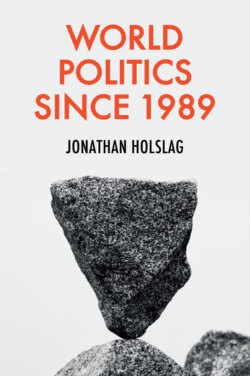Читать книгу World Politics since 1989 - Jonathan Holslag - Страница 19
CHAPTER 1 PROGRESS
ОглавлениеAFTER HAVING READ THROUGH THE INTRODUCTION, SOME READERS might have grown impatient. Why should we question the progress made during the decades that followed the end of the Cold War? In terms of trade, growth, and prosperity, this was a golden age! Indeed, it was so. Just consider figure 1.1. Between 1990 and 2019, world trade increased almost sixfold. Gross production grew fourfold. The number of people living in extreme poverty, below US$1.9 per day, decreased by 70 percent. In absolute terms, the number of very poor people decreased from about 1.9 billion people in 1990 to around 600 million in 2019. One can clearly recognize a few economic dips in the chart; in 2001, for example, in 2009, and in 2015. Yet, each time, the global economy recovered. For all the doomsday preaching, there was no global depression. Despite the dips, recent history remained an upward curve.
Readers might recall the arguments of optimistic thinkers. Steven Pinker described globalization as a cosmic force, born out of the age of enlightenment.1 With some dramatic charts, he argued that globalization improved health, prosperity, security, and wellbeing. This is also the argument that the late Swedish scientist Hans Rosling made in Factfulness.2 His data about receding conflict and advancing wellbeing pop up in numerous presentations of other opinion makers, politicians, and business leaders. Yuval Noah Harari is another acclaimed writer who made the argument that the world has still become a better and more peaceful place.3 This is the moment for humans, he wrote, to move beyond materialistic needs, to use technology to develop their talents, and to emerge like a godlike creature. These optimists are particularly compelling because they advance their case in a seemingly rational and scientific way, supported by loads of data.
Figure 1.1 World development indicators (%)
Note: Trade concerns world exports of goods and services, extremely poor people concerns the estimated number of people living below the US$1.9 PPP per day threshold.
Source: World Development Indicators (WDI).
The aim of this chapter is not to disregard progress. The aim is to put optimistic observations into perspective. We cannot relativize everything. Even if the poverty rate were to be reduced, still hundreds of millions of people would live in destitution. This is a humanitarian tragedy and a security challenge. It suffices, that out of the poor masses a tiny fraction grows angry or opportunistic enough to pick up a weapon, for an entire region to sink into anarchy. Nothing is more devastating to stability than the combination of masses of poor and a few greedy warlords. The data in this chapter call for nuance. Believers in progress should not just look back to see how mankind advanced, but take into consideration the flaws and the errors. The chapter is also a scene setter. It introduces important trends before they are explained in detail in the following chapters. These include the weakening of the West, the limits of globalization, the divergence between China and the rest of the developing world, enduring insecurity, and environmental distress.
Table 1.1. Basic indicators of Western power (%)
Sources: WDI, IMF, SIPRI, UNCTAD.
Note: The West is defined as the United States and Western Europe. “Satisfaction about the state of the country” relates to the US only.
| 1990s | 2000s | 2010s | |
|---|---|---|---|
| Global population | 13 | 12 | 11 |
| Gross domestic product | 61 | 54 | 48 |
| Manufacturing | 53 | 47 | 34 |
| Satisfaction about the state of the country | 40 | 38 | 26 |
| Export destination | 35 | 33 | 26 |
| Foreign lending | 61 | 82 | 39 |
| Foreign direct investment | 73 | 71 | 51 |
| Military spending | 68 | 65 | 50 |
